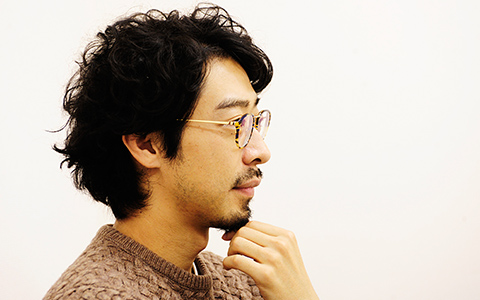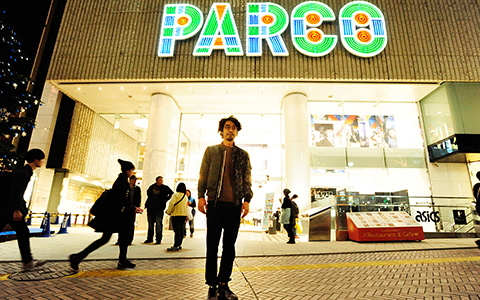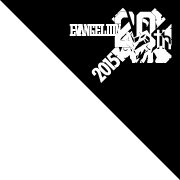Shibuya Parco is a fashion building that housed three Eva-related exhibitions in the last five years, including the “Eva CL Exhibition” held in 2010, “Evangelion 100.0” in 2012, and “Where Evangelion Started” in summer 2015. For our seventh route2015 interview, we invited Chihiro Tezuka from Parco’s Entertainment Division, the company that organized the abovementioned events. Influenced by his friends, Tezuka watched Neon Genesis Evangelion when he was 14, about the same age as the protagonist Shinji Ikari. In the interview, we will get to the bottom of how he was reunited with Eva 15 years later through Parco and the story of how he made the collaboration cafe Kiki & Lala so successful.

Parco Co., Ltd.
Entertainment Division
Chihiro Tezuka
Born in 1980, Kanagawa Prefecture. Following his graduation from the Agricultural Department of Kyoto University, he joined Parco. He started in Hiroshima Parco, after which he transferred to Parco City and started working in the Entertainment Division in 2011. He is involved in numerous projects including exhibitions held at the Shibuya Parco Museum and projects taking place in the culture cafe called The Guest Cafe & Diner, such as the Kiki & Lala Cafe in 2014 which attracted long lines of customers.
It Might Have Come from Me
Koen-dori (Park Avenue) is the street joining Jinnan 1-chome, Shibuya with Yoyogi Park in Tokyo. Did you know one of the reasons it’s named in such a way is the fashion building Shibuya Parco, which opened its gates roughly 40 years ago? Loyal to its name coming from the Italian word for “park,” although focusing on fashion targeting young people, Shibuya Parco is also a place where people gather. Having a movie theater and a gallery of its own, it functions as a place for passing on cultural information.
“The things that catch on in Parco are always half a step ahead of the world trend. You could say our position is similar to that of a springboard in front of a vaulting box. It works the same way with fashion brands and content featured at the Parco Museum or the theater, somehow like this: We pick up something just before it becomes popular, which then makes a jump and spreads throughout the world, just as if it took off from a springboard.”
One of the things Parco gave a powerful jump-start to in the last 5-6 years is anime-centered pop culture. The sixth floor of Shibuya Parco Part 1, called “ShibuPop,” is wholly occupied by shops dealing in anime and game goods; even the official shop of the manga One Piece is located here. During last year, Evangelion Store relocated to P’Parco in Ikebukuro, and Nico Nico Honsha moved its headquarters to the basement of the very same building. It is a spectacle unimaginable to the generations that came to Parco in search of snobbish DC brands in the ‘80s or enjoyed touring the nearby select shops in the ‘90s.
“At first, it wasn’t more than opening a seasonal shop or organizing an event when an anime film was released. It’s only in the recent 1-2 years that anime specialty stores have become so many in numbers. To be honest even I, a member of the company, never thought I would see so many anime posters around Shibuya Parco. And if I think about what started this in the very beginning, the first thing that comes into my mind is Parco City, a webshop our company used to run (now called Parco Limited Store). We made certain anime goods as an experiment around 2009 which we sold online only, and they ended up selling so well it surpassed even our wildest expectations.”
Parco City Co., Ltd. is a company established in 2000 as Parco’s web promotion division. Tezuka became a member of this company through a transfer before starting his current work at Parco’s main office.
“Actually, the one who planned those ‘certain anime goods’ was none other than myself (laughs).”
This time, route 2015 brings you the story of Evangelion and Chihiro Tezuka, the man who (might have) infected Parco, which one could call the hall of Tokyo fashion, with anime power. How did he create that opportunity and how did he encounter Eva? This is what we intend to shed light on.

The first thing that comes to mind when hearing “Shibuya Koen-dori” is Parco. Their first store opened in Ikebukuro in 1967, and in an era where department stores were the most common shopping spots, a fashion building with a more narrow demographic targeting youth was a new concept. Shibuya Parco opened its gates in 1973. Although Shibuya didn’t have nearly as many department stores as Ginza or Shinjuku, it was able grow as the birthplace of youth culture due to Parco’s appearance.

